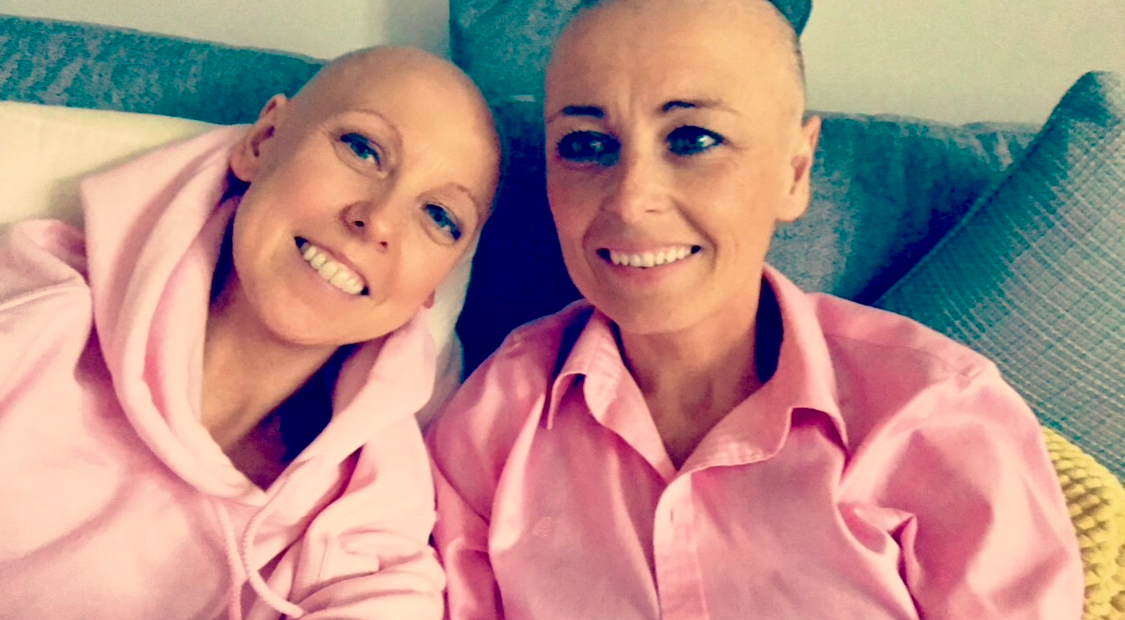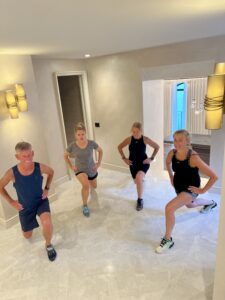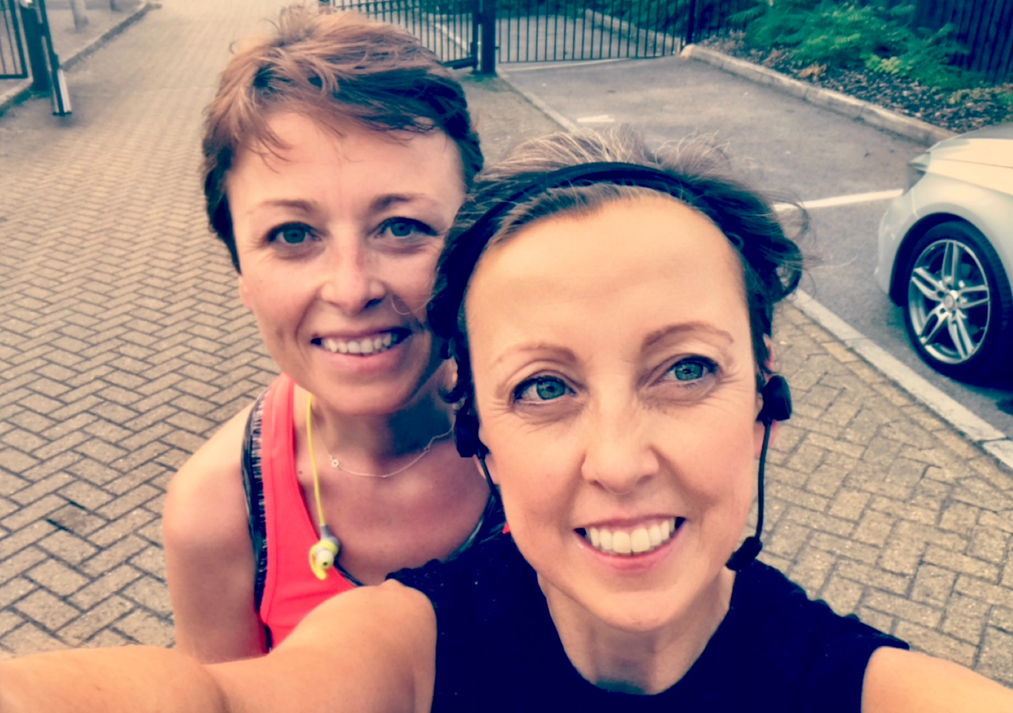 Introduction
Introduction
In 2017, Cathy, a 50-year-old woman, received a diagnosis of oestrogen receptor-positive breast cancer. Determined to control her health and make positive changes in her life, Cathy began a tailored fitness programme under the guidance of Tracey Pinfold, a Level 4 cancer rehab specialist and breast cancer survivor. This case study explores Cathy’s journey, emphasising the transformative power of exercise in cancer recovery and management.
Background
Cathy’s family history with cancer is both tragic and motivating. She lost her mother to lung cancer at age 67 and her father to pancreatic cancer at just 40. Cathy faced her own diagnosis, which inspired her to fight back and make every moment count.
Initial Diagnosis and Response
After her diagnosis in 2017, Cathy was determined to improve her health. Although she was already relatively fit, she recognised the need for a structured approach to her fitness regime. She started collaborating with Tracey Pinfold to create a customised programme for cancer rehabilitation.

Fitness Plan
During her remission in 2018, Cathy’s commitment to fitness blossomed. She completed 10 Race for Life 10k runs, raising an impressive £35,000 for Cancer Research UK. This not only showcased her physical capabilities but also highlighted her determination to support cancer research and inspire others facing similar battles.
“Every step I took during those runs reminded me of my strength and purpose. I wasn’t just running; I was reclaiming my life.”
Discharge and Recurrence
In 2022, Cathy left her consultant feeling optimistic about her future. Sadly, Cathy received a devastating diagnosis of stage 4 breast cancer that had spread to her bones. We determined that her earlier treatment with Tamoxifen, which only works for about 30% of patients, was ineffective.
Current Focus: Maintaining Fitness and Quality of Life
In light of this new diagnosis, Cathy’s fitness programme has shifted focus. The emphasis is now on:
– Bone Health: Incorporating exercises to strengthen bones and prevent fractures.
– Cardiovascular Fitness: Engaging in low-impact cardio exercises to maintain heart health without straining her body.
– Muscle Mass Maintenance: Concentrating on resistance training to preserve muscle mass, which is crucial for mobility and overall well-being.

“On my bad days, when I felt the weight of fatigue and pain, it was exercise that lifted my spirits. I learned to listen to my body and find joy in gentle movement.”
The Importance of Exercise in Cancer Care
Cathy’s story underscores the vital role that exercise plays in cancer recovery and ongoing management. Studies have demonstrated the following benefits of regular physical activity:
– Improved Physical Function: Helps maintain mobility and independence.
– Mental Well-being: Reduces feelings of anxiety and depression, which are often associated with cancer diagnoses.
– Boost Immune Function: Aids in the body’s ability to fight cancer and improve overall health.
Tracey Pinfold, a cancer survivor and rehabilitation specialist, is passionate about spreading awareness about the benefits of exercise for cancer patients.

“A good exercise rehab specialist like Tracey adapts the programme to accommodate my good and bad days. It’s not just about pushing through; it’s about finding what works for my body at that moment.”
Cathy’s journey is a testament to the resilience of the human spirit and proactive health management.
Conclusion
Cathy’s ongoing battle with cancer highlights the importance of exercise as a critical component of cancer care. Her resolve to remain active and support cancer research serves as an inspiration to others facing similar challenges. By sharing her story, we hope to encourage more individuals to embrace fitness, fostering not only physical strength but also emotional resilience in the face of adversity.
Empower Your Journey: The Healing Power of Movement
We encourage readers to consider the impact of exercise on their health, especially in the context of cancer. Whether you are a survivor and want to rebuild, currently undergoing treatment and want to maintain your fitness, or supporting a loved one, remember that movement can be a powerful ally in the fight against cancer.

Exercise Prescription for Cancer Rehabilitation
Objective:
To improve overall fitness, enhance strength and endurance, maintain bone health, and promote emotional well-being through a well-rounded exercise programme.
- Warm-Up (10-15 minutes)
A proper warm-up is essential to prepare the body for exercise, increase blood flow to the muscles, and reduce the risk of injury.
Dynamic Stretching:
– Arm circles (1 minute)
– Leg swings (forward and sideways, 1 minute each side)
– Torso twists (1 minute)
Gentle Aerobic Activity:
– Marching in place or slow walking (5-10 minutes) to gradually elevate heart rate.
- Low-Impact Cardiovascular Exercise (20-30 minutes)
Low-impact cardio exercises are vital for enhancing cardiovascular health while minimising joint stress.
Options:
– Walking: Start with a brisk walk, aiming for 20-30 minutes. Progress to varying the pace (e.g., alternating between moderate and brisk walking).
– Cycling: Use a stationary bike, maintaining a steady pace. Aim for 20-30 minutes.
– Swimming: Engage in gentle lap swimming or water aerobics, which provide resistance while being easy on the joints.
Frequency: Aim for 3-5 days per week.
- Strength and Endurance Training (20-30 minutes)
Strength training is crucial for maintaining muscle mass, enhancing bone density, and improving functional strength.
Exercises:
Resistance Bands:
– Seated rows (2 sets of 10-15 reps)
– Chest press (2 sets of 10-15 reps)
Bodyweight Exercises:
– Squats (modified, if necessary, 2 sets of 10-15 reps)
– Lunges (step-back lunges to reduce strain, 2 sets of 10 reps per leg)
– Modified push-ups (on knees or against a wall, 2 sets of 8-12 reps)
Light Weights:
– Bicep curls (1-2 lbs, 2 sets of 10-15 reps)
– Tricep extensions (1-2 lbs, 2 sets of 10-15 reps)
Frequency: 2-3 days per week, allowing for rest days in between.
- Flexibility and Balance (15-20 minutes)
Incorporating flexibility and balance exercises can improve mobility and reduce the risk of falls.
Exercises:
Static Stretching:
– Hamstring stretch (hold for 15-30 seconds)
– Quadriceps stretch (hold for 15-30 seconds)
– Shoulder and triceps stretch (hold for 15-30 seconds each)
Balance Exercises:
– Single-leg stands (hold for 15-30 seconds per leg)
– Heel-to-toe walk (10-15 steps forward and backward)
Yoga/Pilates: Incorporate gentle yoga or Pilates routines focusing on flexibility and balance.
Frequency: 2-3 days per week, ideally after strength training or cardio sessions.
- Cool Down (5-10 minutes)
Cooling down helps gradually lower the heart rate and promote recovery.
Gentle Stretching:
– Focus on major muscle groups, holding each stretch for 15-30 seconds.
Deep Breathing Exercises:
– Engage in deep, mindful breathing to promote relaxation and reduce stress.

This exercise prescription is designed to be adaptable to Cathy’s progress and comfort level. Regular assessments are conducted to modify the programme as needed, ensuring it remains safe and effective. My goal is to empower Cathy to maintain her physical health and improve her quality of life as she navigates her cancer journey.




